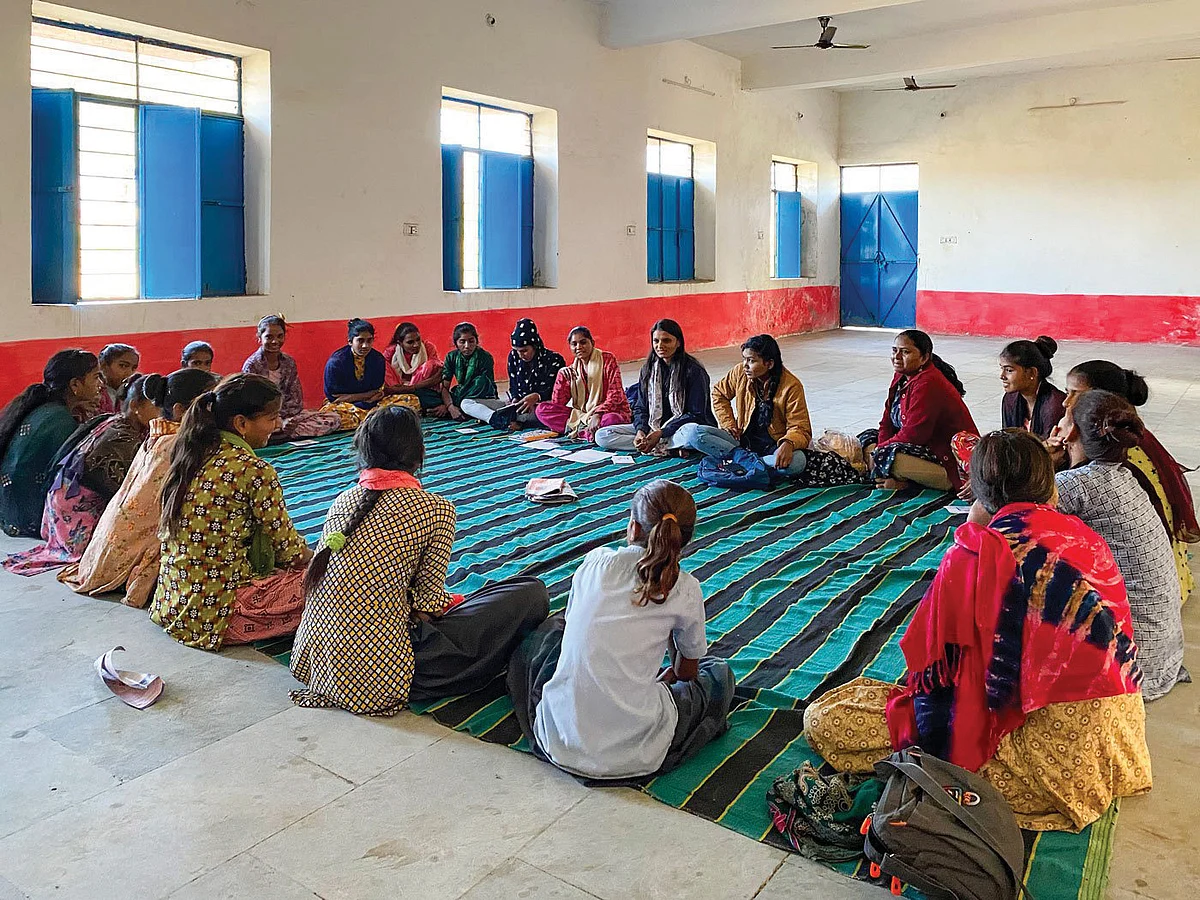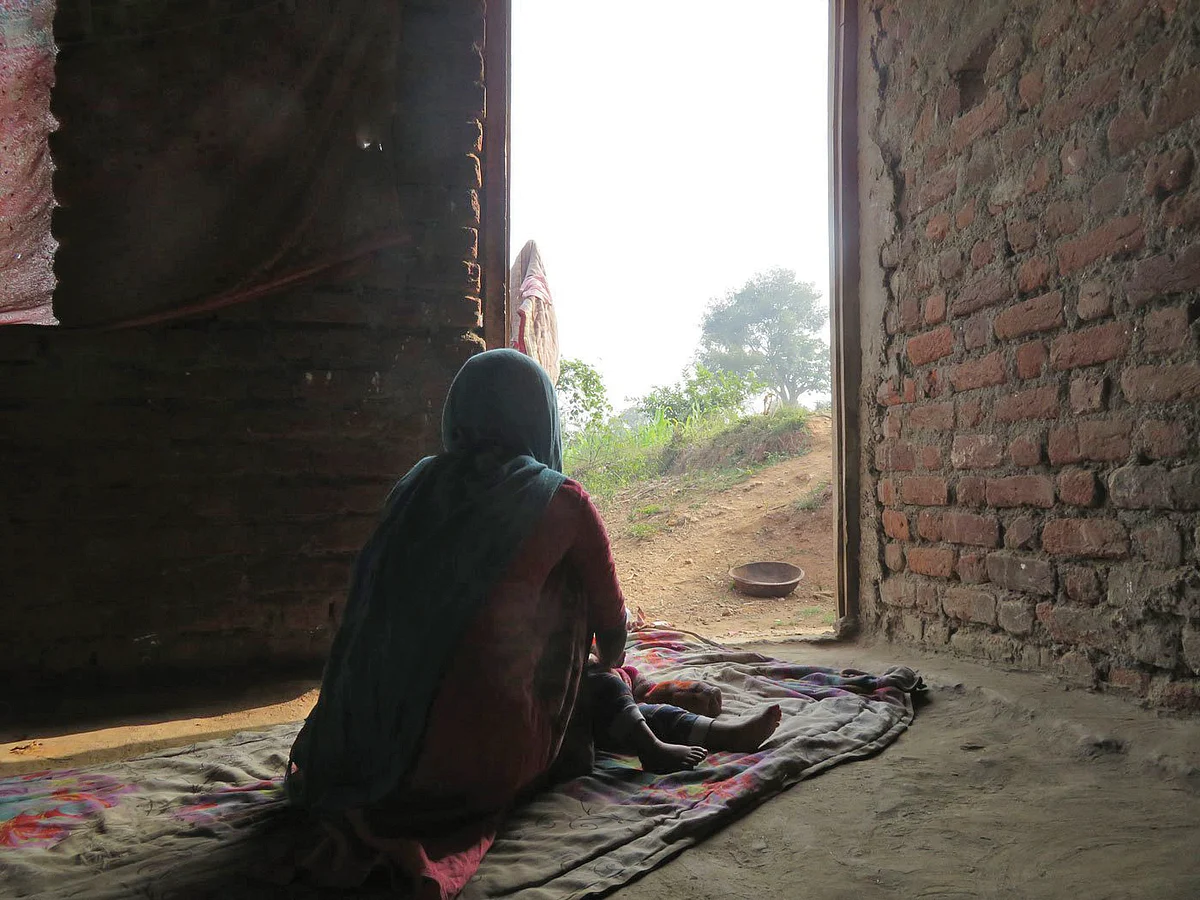Human trafficking: Domestic ties that bind and gag
How the desperately poor Bhil adivasis of Rajasthan’s Banswara have been co-opted into the trafficking of their young girls

The first time Diya almost got away.
She was seated in the bus, nervous, waiting for it to fill up. She had bought a ticket from Surat to Jhalod. From there, she knew it was an hour’s ride to cross the Gujarat border to her home in Kushalgarh, Rajasthan.
She was looking out of the window when Ravi suddenly came from behind her. Before she could react, he dragged her off the bus, pulling her by the hand.
People around were busy loading luggage and managing children. No one paid attention to the angry young man and the frightened teenager. “I was scared to shout,” Diya says. It was best to stay quiet given her past experience of Ravi’s temper.
That night, back at the construction site, her home and prison for the last six months, Diya couldn’t sleep. Her body hurt all over. The beating by Ravi had split her skin in places and given her bruises. “He used his fists and even kicked me,” she remembers. “Nobody could stop him.”
Men who intervened were accused of having their eye on her. Women who saw the abuse kept their distance, frightened by the violence. If someone dared to object, Ravi would say, “Meri gharwali hai, tum kyon beech mein aa rahe ho (She is my wife. Why are you interfering)?”
Diya and Ravi are Bhil Adivasis from Rajasthan’s Banswara district, which has the second-highest number of poor people in the state, says a 2023 multidimensional poverty report. The small landholdings, lack of irrigation, absence of jobs and overall poverty make Kushalgarh tehsil a hub for distress migration among the Bhil tribals, who make up 90 per cent of the population.
Like many others, Diya and Ravi would appear to be just another migrant couple, looking for work on construction sites in Gujarat. But Diya’s migration was also an abduction.
Two years ago, 16-year-old Diya was a Class 10 student in a school in neighbouring Sajjangarh when she first met Ravi in the market. An older woman from the village had handed over his number on a piece of paper and insisted she see him, saying the young man just wanted to talk to her.
Diya didn’t call him. But, the next week when he came to the market, she spoke briefly to him. “Humko ghumane le jayega bola, Bagidora. Bike pe. (He said we would go for a spin on the bike to Bagidora.) I was told to come out at 2 p.m., an hour earlier, from school,” she recalls. The next day he was waiting outside her school, with a friend.
“We didn’t go to Bagidora (an hour away). We went to the bus stand and he made me get on a bus to Ahmedabad,” she says, 500 kilometres away, in the next state.
A panicked Diya managed to make a phone call to her parents. “My chacha (paternal uncle) came to pick me up in Ahmedabad. But Ravi had already heard the news from his friends back home, so he dragged me to Surat.”
After that, he became paranoid about her speaking to anyone, and the violence started.
Asking for a phone to make a call would invite more violence. Diya remembers a day when, desperate to talk to her family, she was crying and begging for his phone when “he pushed me off the first floor of the site. Luckily, I landed on a heap of rubble, completely bruised all over,” she recalls, showing parts of her back that still hurt.
When she first learnt of Diya’s abduction, her mother Kamala, a 35-year-old daily wage worker, tried to get her back. Now speaking at the family’s kuccha single-room hut in a hamlet in Banswara district, the mother remembers crying uncontrollably: “Beti toh hai meri. Apne ko dil nahin hota kya (After all, she is my daughter. Will my heart not yearn to have her back)?”
A few days after Ravi took Diya, Kamala filed a police complaint against him.
Rajasthan records the third-highest number of cases of crimes against women. However, its record in chargesheeting these crimes is the lowest, at 55 per cent, as per NCRB data 2020. Two out of three complaints for kidnapping and abduction don’t make it to a police case file. Diya’s case did not make it as well.
“They took back the case,” says Roop Singh, deputy superintendent of police in Kushalgarh.
Kamala says the banjadia—a group of village men who function as an extra-judicial court—got involved. They persuaded Kamala and her husband Kishan to settle the matter without involving the police by asking for a ‘bride price’—a system among the Bhils where the boy’s family pays for a wife. (When the man ends the marriage, he demands the money back so that he can marry again.)
The family says they were asked to take Rs 1–2 lakh and drop the police case of abduction.
The ‘marriage’ had now received social sanction. Diya’s underage status and her consent were completely disregarded.
In Rajasthan, a quarter of women are married before 18 years of age, says the National Family Health Survey 2019–2021 (NFHS-5).
Teena Garasiya is a social worker in Kushalgarh. A Bhil Adivasi herself, she is not willing to pass off cases like Diya’s as mere runaway brides.
“Most cases that come to us, I never get the feeling that the girls have gone of their own accord. Or they have gone thinking of any benefit, or even love or happiness in the relationship,” says the head of Aajeevika’s Livelihood Bureau in Banswara district; she has been working with migrant women for over a decade.

“I see their going away as a conspiracy, a strategy for trafficking. There are people within who bring girls into these relationships,” Garasiya adds, claiming money changes hands even for an introduction to the girl. “If a girl is 14–15 years, what understanding do they have of relationships? Of life?”
On a January morning, in Teena’s office in Kushalgarh, three families have come with their daughters. Their stories are similar to Diya’s. Seema was married at 16 and migrated to Gujarat for work with her husband. “He was jealous if I spoke to anyone. Once he hit me so hard that I still can’t hear from that ear properly,” she says.
“The beatings were terrible. It used to hurt so much I couldn’t get up from the floor and then he would say she is a kaamchor (shirker). So, I worked with the injuries,” she adds. Her earnings went straight to him and “he wouldn’t buy even atta (flour), spending it all on alcohol.”
She finally managed to leave him after threatening to end her life.
Since then, he has been living with another woman. “I’m pregnant, but he is not willing to end our marriage or give me money to live,” she says.
Her family has filed an FIR for abandonment. The Protection of Women from Domestic Violence Act, 2005 section 20(1)(d) says maintenance must be provided.
Rani, 19, is mother to a three-year-old and pregnant with her second child. She too has been abandoned by her husband, but not before she went through verbal and physical torture. “He would drink every day and start a fight calling her, ‘gandi aurat, randi (dirty slut),” she says.

Although she filed a police complaint, it was withdrawn when the banjadia brokered a deal on a 50-rupee stamp paper where the husband’s family promised he would behave. A month later when the harassment started again, the banjadia turned a blind eye.
“I have gone to the police, but because I withdrew my earlier complaint, the evidence is lost,” says Rani, who never went to school but is learning the legal ropes.
The literacy rate of Bhil women is an abysmal 31 per cent (Statistical Profile of Scheduled Tribes, 2013).
At the Aajeevika Bureau office, team members offer legal and overarching support to women like Diya, Seema and Rani. They have even printed a small booklet, ‘Shramik Mahilaon ka Surakshit Pravas (safe migration for women labourers)’, that uses photos and graphics to inform women of helplines, hospitals, labour cards and more.
But for survivors, it’s a long road ahead with countless trips to police stations, courts and no clear end in sight. With the additional responsibility of young children, many cannot migrate again for work.
This is an edited excerpt of an article reproduced with permission from the People’s Archive of Rural India (PARI). The full report can be read at www.ruralindiaonline.org.
Follow us on: Facebook, Twitter, Google News, Instagram
Join our official telegram channel (@nationalherald) and stay updated with the latest headlines